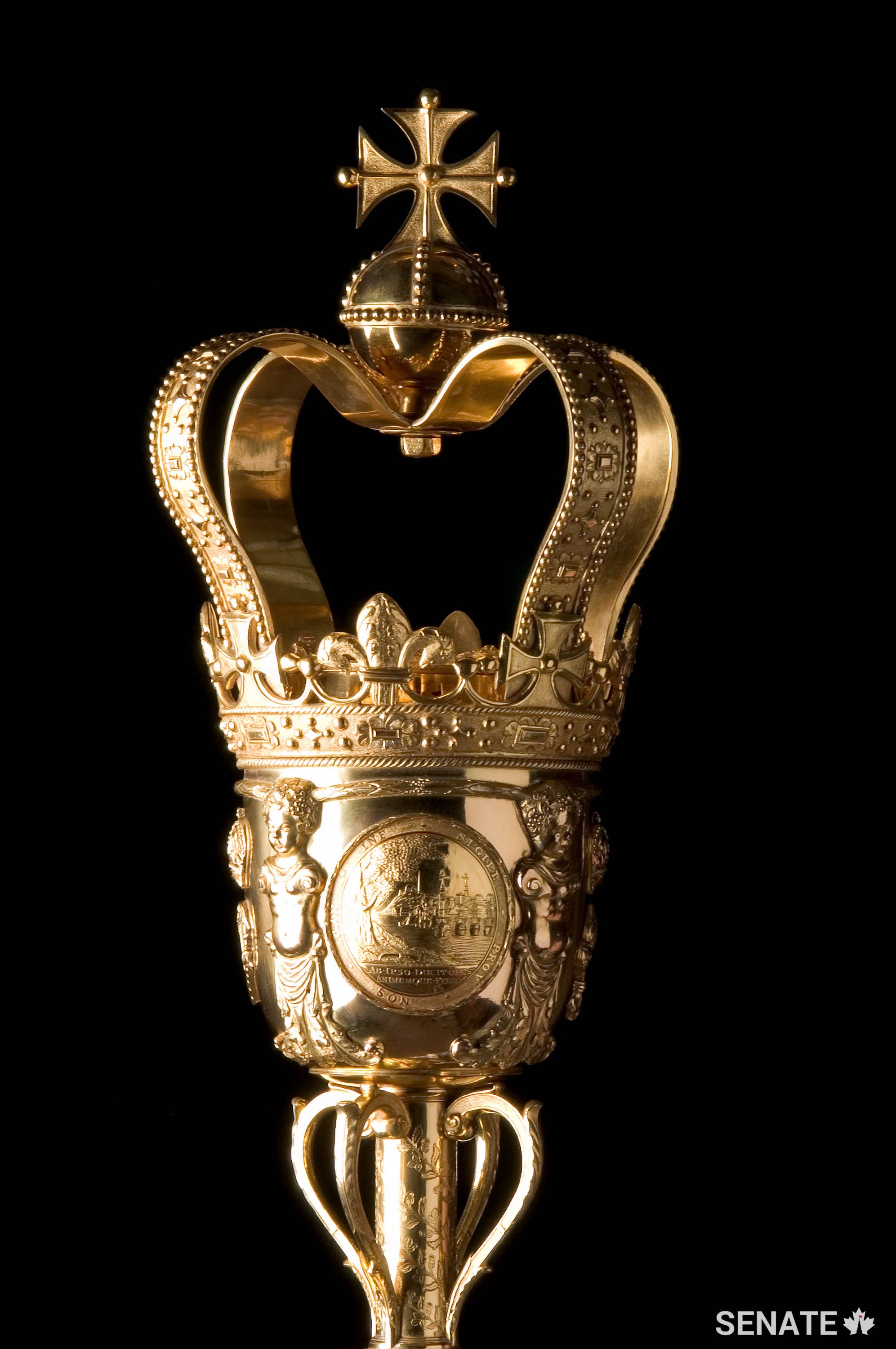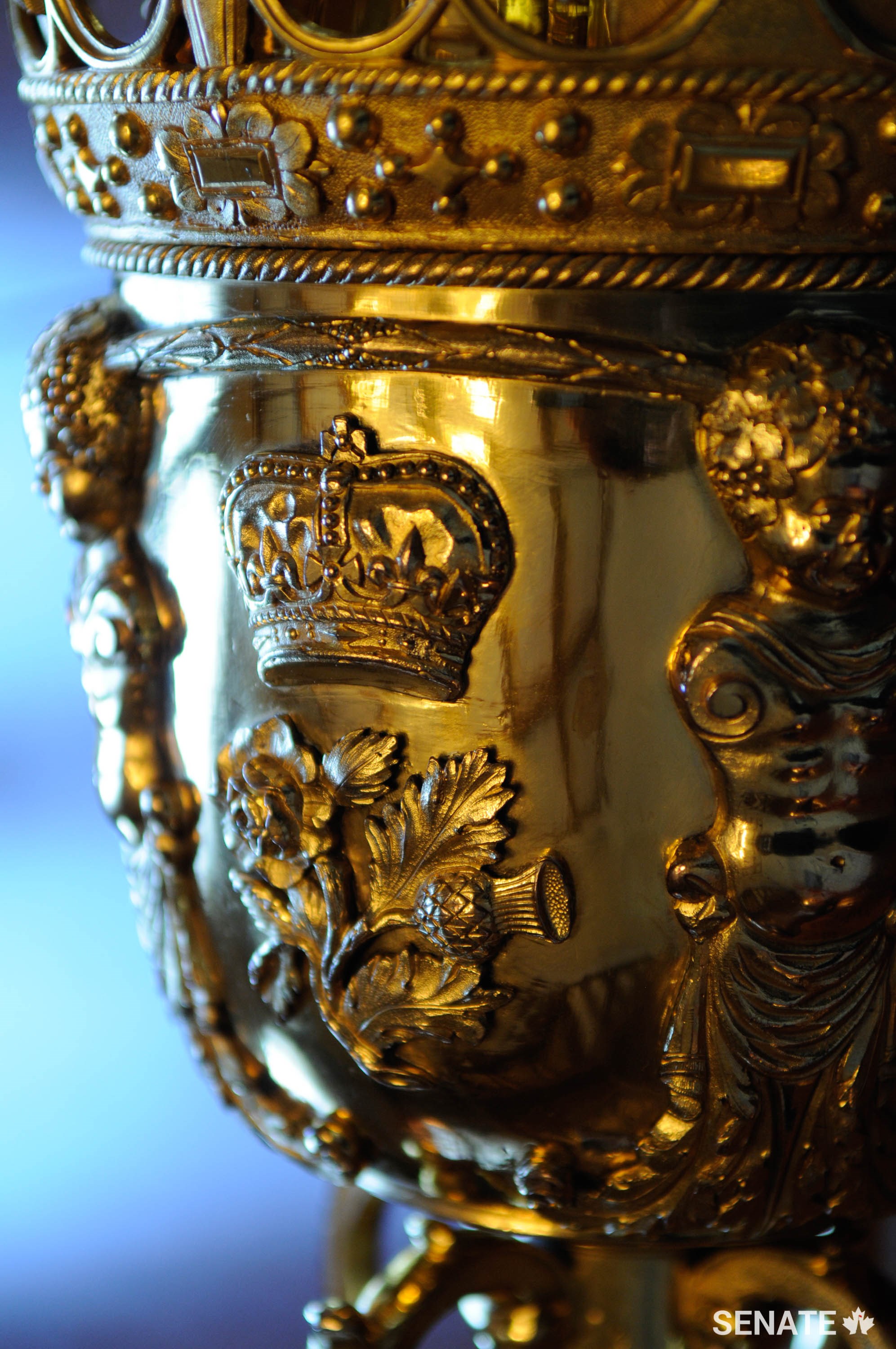The Senate Mace: From historical weapon to symbol of monarchy



The Senate Mace, in all its golden glory, has witnessed Canadian parliamentary history since before Confederation. Based on an ancient club-like weapon, it can be seen carried into the Senate Chamber by the Mace Bearer during the Speaker’s parade before each sitting. The mace is a crucial item of parliamentary regalia — without it, the Senate cannot meet.
The 1.6-metre-long gold-plated brass mace weighs approximately 11 kilograms and is arguably one of the most important artifacts inside the Senate Chamber. Historically used by the Sergeant-at-Arms in England as a form of protection for the reigning monarch, the use of the mace now symbolizes the monarch’s authority in the Senate of Canada. Consequently, the mace represents the authority of the Senate granted by the Crown to meet and pass laws.
All legislative assemblies across Canada have a mace, but the Senate’s is by far the oldest, although it’s not known exactly when it was created.
The current mace survived three fires in Montreal, as well as the 1916 fire that destroyed Parliament’s original Centre Block building. The brave actions of Lt.-Col. Ernest J. Chambers, Gentleman Usher of the Black Rod, saved the mace from going up in flames on Parliament Hill. Following the fire, the Senate briefly lent its mace to the House of Commons because the lower chamber’s mace was lost in the fire.
The head of the Senate Mace is divided into four panels, the first of which shows the French fleur-de-lis, the second showing the Irish harp, the third showing an English rose and Scottish thistle, and the fourth showing the Great Seal of Lower Canada. In the centre of the Crown is the coat of arms of the United Kingdom. After the Mace Bearer carries it into the Red Chamber, he or she places it on a red cushion on the Clerk’s Table with the crown facing the Speaker. The mace must be present on the table for the Senate to conduct its business, and stays in its place until the end of each sitting. During meetings of the Committee of the Whole, the mace is placed under the table.
During ceremonies of state when the Governor General is present in the Senate Chamber, the mace is held upright by the Mace Bearer near the thrones. When the monarch is in the Senate Chamber, the mace is covered with a cloth, since it is unnecessary to symbolize the monarch when he or she is present. When the mace is not in use for Senate proceedings, it is stored in a cabinet in the Speaker's office.



